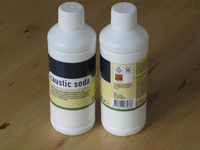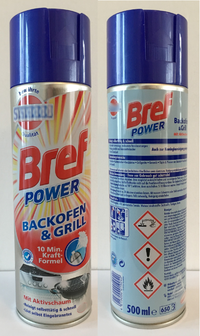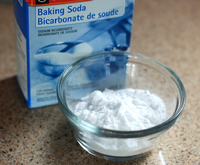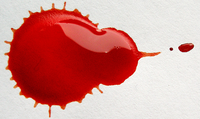Difference between revisions of "Base"
| (6 intermediate revisions by one other user not shown) | |||
| Line 38: | Line 38: | ||
==Key Stage 4== | ==Key Stage 4== | ||
===Meaning=== | ===Meaning=== | ||
| − | A [[base]] is a [[compound]] which is able to produce [[Hydroxide Ion|OH<sup>-</sup> ions]] when [[dissolve]]d in [[water]] to form a [[solution]] with a [[pH]] greater than [[Neutral (Chemistry)|7]]. | + | A [[base]] is a [[compound]] which is able to produce [[Hydroxide Ion (Chemistry)|OH<sup>-</sup> ions]] when [[dissolve]]d in [[water]] to form a [[solution]] with a [[pH]] greater than [[Neutral (Chemistry)|7]]. |
===About Bases=== | ===About Bases=== | ||
| − | : [[Base]]s are [[Ionic Compound|ionic compounds]] where there is an [[Ionic Bond|ionic bond]] between a [[metal]] and an [[Oxide]], [[Carbonate]] or [[Hydroxide]]. | + | : [[Base]]s are [[Ionic Compound|ionic compounds]] where there is an [[Ionic Bond|ionic bond]] between a [[metal]] and an [[Oxide]], [[Carbonate]] or [[Hydroxide Ion (Chemistry)|Hydroxide]]. |
: [[Base]]s will [[Chemical Reaction|react]] with [[acid]]s to form a [[salt]]. | : [[Base]]s will [[Chemical Reaction|react]] with [[acid]]s to form a [[salt]]. | ||
: Some [[base]]s are [[insoluble]]. | : Some [[base]]s are [[insoluble]]. | ||
| − | : A [[soluble]] [[base]] will [[dissolve]]s in [[water]] to produce an [[alkali]] which has [[Hydroxide Ion|Hydroxide ions]] which are either donated by the [[base]] or formed by a [[Chemical Reaction|reaction]] with [[water]] to form a [[Hydroxide Ion|Hydroxide ion]]. | + | : A [[soluble]] [[base]] will [[dissolve]]s in [[water]] to produce an [[alkali]] which has [[Hydroxide Ion (Chemistry)|Hydroxide ions]] which are either donated by the [[base]] or formed by a [[Chemical Reaction|reaction]] with [[water]] to form a [[Hydroxide Ion (Chemistry)|Hydroxide ion]]. |
| − | : The [[Hydroxide Ion|Hydroxide ion]]s in an [[alkali]] will donate [[electron]]s to [[Hydrogen Ion|Hydrogen ions]] to form [[water]]. This is a [[neutralisation]] [[Chemical Reaction|reaction]]. | + | : The [[Hydroxide Ion (Chemistry)|Hydroxide ion]]s in an [[alkali]] will donate [[electron]]s to [[Hydrogen Ion (Chemistry)|Hydrogen ions]] to form [[water]]. This is a [[neutralisation]] [[Chemical Reaction|reaction]]. |
| + | |||
| + | ===Extra Information=== | ||
| + | {{#ev:youtube|https://www.youtube.com/watch?v=DupXDD87oHc}} | ||
| + | |||
| + | ===References=== | ||
| + | ====AQA==== | ||
| + | :[https://www.amazon.co.uk/gp/product/0198359373/ref=as_li_tl?ie=UTF8&camp=1634&creative=6738&creativeASIN=0198359373&linkCode=as2&tag=nrjc-21&linkId=952a73bbb09d222ecc4b50d200679849 ''Bases, page 204, GCSE Biology; Third Edition, Oxford University Press, AQA ''] | ||
| + | :[https://www.amazon.co.uk/gp/product/1782945954/ref=as_li_tl?ie=UTF8&camp=1634&creative=6738&creativeASIN=1782945954&linkCode=as2&tag=nrjc-21&linkId=100574c08fbbb64318256eb79ed61a76 ''Bases, page 246, GCSE Biology, CGP, AQA ''] | ||
| + | :[https://www.amazon.co.uk/gp/product/1471851354/ref=as_li_tl?ie=UTF8&camp=1634&creative=6738&creativeASIN=1471851354&linkCode=as2&tag=nrjc-21&linkId=9012a0d354024419214fb3ad5ac44ba0 ''Bases, page 247, GCSE Combined Science Trilogy 1, Hodder, AQA ''] | ||
| + | :[https://www.amazon.co.uk/gp/product/1471851346/ref=as_li_tl?ie=UTF8&camp=1634&creative=6738&creativeASIN=1471851346&linkCode=as2&tag=nrjc-21&linkId=3ac654f4b0da781c49c855a1af4c92ea ''Bases, page 280, GCSE Chemistry, Hodder, AQA ''] | ||
| + | :[https://www.amazon.co.uk/gp/product/1782945598/ref=as_li_tl?ie=UTF8&camp=1634&creative=6738&creativeASIN=1782945598&linkCode=as2&tag=nrjc-21&linkId=ad276ad49df77ab4b40ab4fd0fe09709 ''Bases, pages 128, 129, GCSE Combined Science; The Revision Guide, CGP, AQA ''] | ||
| + | :[https://www.amazon.co.uk/gp/product/178294639X/ref=as_li_tl?ie=UTF8&camp=1634&creative=6738&creativeASIN=178294639X&linkCode=as2&tag=nrjc-21&linkId=51599bb45a2bfaf7c1b6a978b2ca2616 ''Bases, pages 130-132, GCSE Combined Science Trilogy; Chemistry, CGP, AQA ''] | ||
| + | :[https://www.amazon.co.uk/gp/product/1782945962/ref=as_li_tl?ie=UTF8&camp=1634&creative=6738&creativeASIN=1782945962&linkCode=as2&tag=nrjc-21&linkId=476bb5c8d1dfb5c08ac81b6d4d1c98d8 ''Bases, pages 155-157, GCSE Chemistry, CGP, AQA ''] | ||
| + | :[https://www.amazon.co.uk/gp/product/1782945571/ref=as_li_tl?ie=UTF8&camp=1634&creative=6738&creativeASIN=1782945571&linkCode=as2&tag=nrjc-21&linkId=9e29fad914244909903e5e93f8a01d56 ''Bases, pages 51, 54, GCSE Chemistry; The Revision Guide, CGP, AQA ''] | ||
| + | :[https://www.amazon.co.uk/gp/product/0198359381/ref=as_li_tl?ie=UTF8&camp=1634&creative=6738&creativeASIN=0198359381&linkCode=as2&tag=nrjc-21&linkId=47c8d1ae58d8b3a5e2094cd447154558 ''Bases, pages 92-93, 96-97, 163, GCSE Chemistry; Third Edition, Oxford University Press, AQA ''] | ||
| + | ====Edexcel==== | ||
| + | :[https://www.amazon.co.uk/gp/product/1782945741/ref=as_li_tl?ie=UTF8&camp=1634&creative=6738&creativeASIN=1782945741&linkCode=as2&tag=nrjc-21&linkId=30da4f2178da182547b62a7329d13b57 ''Bases (acids and bases), pages 105, 107, GCSE Combined Science; The Revision Guide, CGP, Edexcel ''] | ||
| + | :[https://www.amazon.co.uk/gp/product/1292120193/ref=as_li_tl?ie=UTF8&camp=1634&creative=6738&creativeASIN=1292120193&linkCode=as2&tag=nrjc-21&linkId=572df39392fb4200db8391d98ae6314e ''Bases, page 200, GCSE Combined Science, Pearson Edexcel ''] | ||
| + | :[https://www.amazon.co.uk/gp/product/1292120215/ref=as_li_tl?ie=UTF8&camp=1634&creative=6738&creativeASIN=1292120215&linkCode=as2&tag=nrjc-21&linkId=8f96ddb76196848bafdb124354e4cf77 ''Bases, page 56, GCSE Chemistry, Pearson, Edexcel ''] | ||
| + | :[https://www.amazon.co.uk/gp/product/1782948147/ref=as_li_tl?ie=UTF8&camp=1634&creative=6738&creativeASIN=1782948147&linkCode=as2&tag=nrjc-21&linkId=f63dcd8345f4e49c717b39a228a36c7c ''Bases, pages 118-121, GCSE Chemistry, CGP, Edexcel ''] | ||
| + | :[https://www.amazon.co.uk/gp/product/1782945725/ref=as_li_tl?ie=UTF8&camp=1634&creative=6738&creativeASIN=1782945725&linkCode=as2&tag=nrjc-21&linkId=694be7494de75af3349537d34e13f7f0 ''Bases, pages 43, 45, GCSE Chemistry; The Revision Guide, CGP, Edexcel ''] | ||
| + | :[https://www.amazon.co.uk/gp/product/1782945741/ref=as_li_tl?ie=UTF8&camp=1634&creative=6738&creativeASIN=1782945741&linkCode=as2&tag=nrjc-21&linkId=30da4f2178da182547b62a7329d13b57 ''Bases; reactions of, pages 107, 109, GCSE Combined Science; The Revision Guide, CGP, Edexcel ''] | ||
| + | :[https://www.amazon.co.uk/gp/product/1782945725/ref=as_li_tl?ie=UTF8&camp=1634&creative=6738&creativeASIN=1782945725&linkCode=as2&tag=nrjc-21&linkId=694be7494de75af3349537d34e13f7f0 ''Bases; reactions of, pages 45, 47, GCSE Chemistry; The Revision Guide, CGP, Edexcel ''] | ||
| + | |||
| + | ====OCR==== | ||
| + | :[https://www.amazon.co.uk/gp/product/1782945695/ref=as_li_tl?ie=UTF8&camp=1634&creative=6738&creativeASIN=1782945695&linkCode=as2&tag=nrjc-21&linkId=ceafcc80bcad6b6754ee97a0c7ceea53 ''Bases (acids and bases), pages 112, 115, Gateway GCSE Combined Science; The Revision Guide, CGP, OCR ''] | ||
| + | :[https://www.amazon.co.uk/gp/product/1782945660/ref=as_li_tl?ie=UTF8&camp=1634&creative=6738&creativeASIN=1782945660&linkCode=as2&tag=nrjc-21&linkId=83aa4500ad7759e7f401a1c5ba5df758 ''Bases (in DNA), pages 15, 16, Gateway GCSE Biology; The Revision Guide, CGP, OCR ''] | ||
| + | :[https://www.amazon.co.uk/gp/product/0198359829/ref=as_li_tl?ie=UTF8&camp=1634&creative=6738&creativeASIN=0198359829&linkCode=as2&tag=nrjc-21&linkId=90e8d7b4f039d53035238fa0320fe00b ''Bases (not acids), pages 112, 114, 277, Gateway GCSE Chemistry, Oxford, OCR ''] | ||
| + | :[https://www.amazon.co.uk/gp/product/0198359829/ref=as_li_tl?ie=UTF8&camp=1634&creative=6738&creativeASIN=0198359829&linkCode=as2&tag=nrjc-21&linkId=90e8d7b4f039d53035238fa0320fe00b ''Bases (nucleotides/DNA), pages 244, 245, Gateway GCSE Chemistry, Oxford, OCR ''] | ||
| + | :[https://www.amazon.co.uk/gp/product/1782945695/ref=as_li_tl?ie=UTF8&camp=1634&creative=6738&creativeASIN=1782945695&linkCode=as2&tag=nrjc-21&linkId=ceafcc80bcad6b6754ee97a0c7ceea53 ''Bases(in DNA), page 14, Gateway GCSE Combined Science; The Revision Guide, CGP, OCR ''] | ||
| + | :[https://www.amazon.co.uk/gp/product/0198359810/ref=as_li_tl?ie=UTF8&camp=1634&creative=6738&creativeASIN=0198359810&linkCode=as2&tag=nrjc-21&linkId=d768d99f1a06f7c12fab40e5aef85a55 ''Bases, DNA, pages 29, 163, Gateway GCSE Biology, Oxford, OCR ''] | ||
| + | :[https://www.amazon.co.uk/gp/product/1782945679/ref=as_li_tl?ie=UTF8&camp=1634&creative=6738&creativeASIN=1782945679&linkCode=as2&tag=nrjc-21&linkId=a2db42f7b4bdf10cafaafa3bb9120940 ''Bases, pages 43, 46, GCSE Chemistry; The Revision Guide, CGP, OCR Gateway ''] | ||
Latest revision as of 18:14, 30 November 2019
Contents
Key Stage 3
Meaning
A base is a metal compound with a pH greater than 7.
About Bases
- A base can be Harmful, Irritant or corrosive.
- Bases can neutralise an acid.
- Many bases are insoluble solids.
- A base can be a:
- Metal Hydroxides are soluble bases known as 'Alkalis'.
Examples
| Drain cleaner is around pH 14. | Oven cleaner is around pH 13.5. | Toilet cleaner is around pH 12. |
| Baking soda is around pH 9.5. | Sea water is around pH 8. | Blood is around pH 7.4. |
Key Stage 4
Meaning
A base is a compound which is able to produce OH- ions when dissolved in water to form a solution with a pH greater than 7.
About Bases
- Bases are ionic compounds where there is an ionic bond between a metal and an Oxide, Carbonate or Hydroxide.
- Bases will react with acids to form a salt.
- Some bases are insoluble.
- A soluble base will dissolves in water to produce an alkali which has Hydroxide ions which are either donated by the base or formed by a reaction with water to form a Hydroxide ion.
- The Hydroxide ions in an alkali will donate electrons to Hydrogen ions to form water. This is a neutralisation reaction.
Extra Information
References
AQA
- Bases, page 204, GCSE Biology; Third Edition, Oxford University Press, AQA
- Bases, page 246, GCSE Biology, CGP, AQA
- Bases, page 247, GCSE Combined Science Trilogy 1, Hodder, AQA
- Bases, page 280, GCSE Chemistry, Hodder, AQA
- Bases, pages 128, 129, GCSE Combined Science; The Revision Guide, CGP, AQA
- Bases, pages 130-132, GCSE Combined Science Trilogy; Chemistry, CGP, AQA
- Bases, pages 155-157, GCSE Chemistry, CGP, AQA
- Bases, pages 51, 54, GCSE Chemistry; The Revision Guide, CGP, AQA
- Bases, pages 92-93, 96-97, 163, GCSE Chemistry; Third Edition, Oxford University Press, AQA
Edexcel
- Bases (acids and bases), pages 105, 107, GCSE Combined Science; The Revision Guide, CGP, Edexcel
- Bases, page 200, GCSE Combined Science, Pearson Edexcel
- Bases, page 56, GCSE Chemistry, Pearson, Edexcel
- Bases, pages 118-121, GCSE Chemistry, CGP, Edexcel
- Bases, pages 43, 45, GCSE Chemistry; The Revision Guide, CGP, Edexcel
- Bases; reactions of, pages 107, 109, GCSE Combined Science; The Revision Guide, CGP, Edexcel
- Bases; reactions of, pages 45, 47, GCSE Chemistry; The Revision Guide, CGP, Edexcel
OCR
- Bases (acids and bases), pages 112, 115, Gateway GCSE Combined Science; The Revision Guide, CGP, OCR
- Bases (in DNA), pages 15, 16, Gateway GCSE Biology; The Revision Guide, CGP, OCR
- Bases (not acids), pages 112, 114, 277, Gateway GCSE Chemistry, Oxford, OCR
- Bases (nucleotides/DNA), pages 244, 245, Gateway GCSE Chemistry, Oxford, OCR
- Bases(in DNA), page 14, Gateway GCSE Combined Science; The Revision Guide, CGP, OCR
- Bases, DNA, pages 29, 163, Gateway GCSE Biology, Oxford, OCR
- Bases, pages 43, 46, GCSE Chemistry; The Revision Guide, CGP, OCR Gateway





